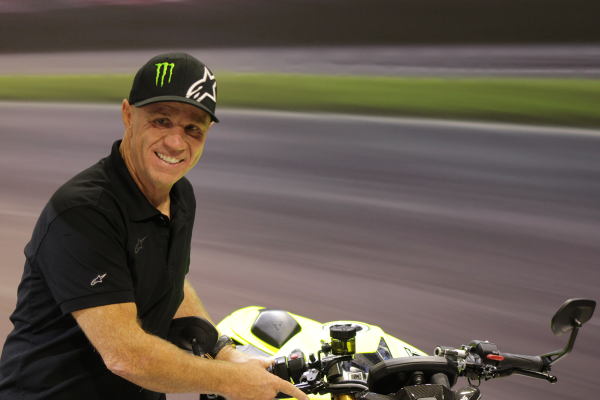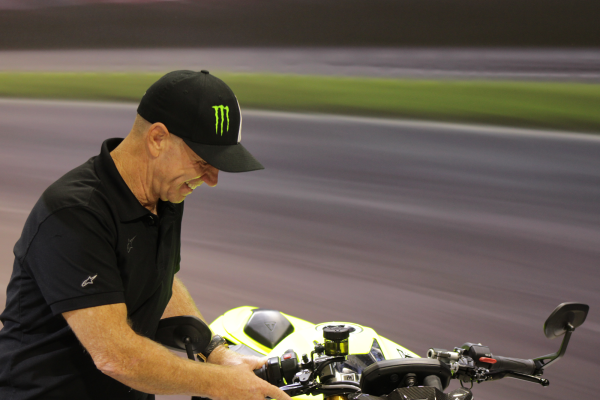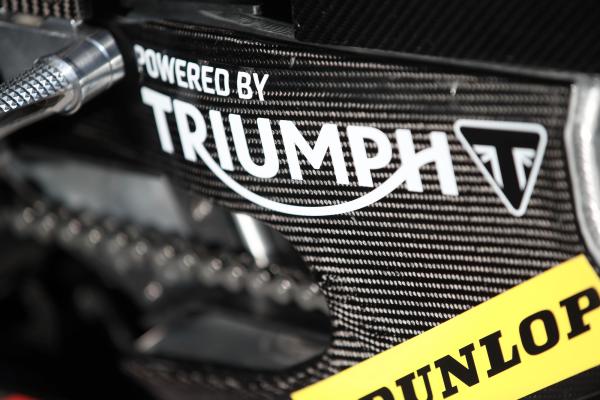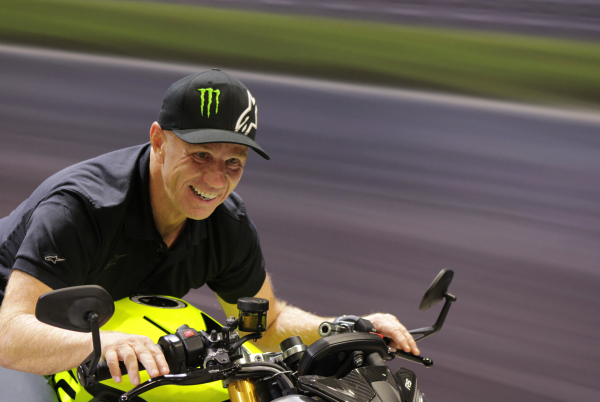Mamola: "I really felt a great character" of Triumph Street Triple Moto2 Edition
Randy Mamola is the only person other than Triumph staff to have ridden the new Moto2 Edition Street Triple 765, so we asked him for his thoughts.

Member for
54 years 8 monthsThe 2023 Triumph Street Triple range includes the British marque's first unfaired model to directly reference the British manufacturer’s involvement in Moto2.
The 2023 Triumph Street Triple 765 Moto2 Edition might not be the largest technical step forward in the history of motorcycling, or even of Triumph, but it does represent an ultimate refinement of what is one of Triumph’s defining modern ranges.
Triumph has been providing the 765cc three-cylinder engines to the Moto2 World Championship since 2019, and from the 2022 season the engine has also been available in the Moto2 European Championship.
Alex Marquez, Enea Bastianini, Remy Gardner, and Augusto Fernandez have all become World Champions with Triumph power in Moto2, and Lukas Tulovic won the European title this year, becoming the first rider to take the crown with the 765cc triple.
To celebrate Triumph’s involvement in Moto2, it has decided to launch a Moto2 Edition of its Street Triple 765 for 2023, which uses the same basic three-cylinder motor as those used in Moto2.
The bike is not a leap forwards but it features several refinements and small upgrades, such as an Ohlins shock as well as forks, that bring it a step above the Street Triple 765 R and Street Triple 765 RS.
As of now, the only people to have ridden the new Street Triple 765 Moto2 Edition are Triumph staff. And 13-time Grand Prix winner Randy Mamola, who rode it in Valencia at the final MotoGP round of the season.
“Unfortunately, it happened right at the end of the day, which it was scheduled for, and I only got to do one lap,” Mamola said. However, “I actually did the fly-by on the rear wheel at about 130mph because I was so upset at the fact I was told ‘only one lap,’” he continued.
Mamola was upset about being given only one lap because he wanted to try to understand the bike by exploring its limits, but to do that in one lap having never touched it before is more difficult.
“So, let me tell you, it became difficult for me in a way [because]: Grand Prix rider, like myself, I’m 63-years-old - when I rode the bike I was 62, but I just turned 63 - and I wanted to do a good showing,” Mamola explained, “but I wanted to do a good showing because I really wanted to be able to push the bike.
“But now that I’ve got a motorcycle that has brand new tyres, cold, sun’s going down, it’s on a race track that I know really, really well, and I’m being told one lap. So, I knew what I had to do, and I knew where to do it and so on.”
Before he went out onto the track at the Circuit Ricardo Tormo, Mamola had turned off all the electronics on the new, unfamiliar bike.
“So, what I do is I put the control in my hands of grip level,” Mamola explained, “to see where I’m at. So, when I [open the throttle]- I don’t go flat out, but when I go forward with it, I see the torque of the engine, I see what I’ve got.” This was in turn one. “Now I’ve got 300 metres before I go to turn two, which is a hairpin,” and, as Mamola explains, “turn two is another one where you can lock it up and lose the front - don’t want to do that on a press day.”
From turn three, though, the possibility to understand the character of the bike grew. Mamola said “The most important aspect is the engine, and the character of the engine and so on,” and, in turn three, he said, “everybody knows what you can do with the bike, you can gas it hard. And I went ‘this feels really good.’”
“Eventually, six, seven, eight- all those left-hand corners, I really felt a great character of the bike,” Mamola continued, “something that had a very elastic rpm range, which is great with the bike.
“One thing about three-cylinders is they are very notable in terms of what you feel with the throttle, which makes it more simplified, even without electronics.”
A three-cylinder 765cc engine is not a conventional one by motorcycling standards in general, and even more so in the modern day and with the growing popularity of mid-capacity twin-cylinders.
“I did street bike tests forever on race tracks for magazines for about 10 years, about 15 years ago,” Mamola said, “and I had an amazing time. Always I wanted the more torque from a 1000cc and so on, but there’s a lot of people [...] that can’t handle that kind of torque and that power, so it’s just useless.
“This is a bike that’s- you have more than a 600, less than a 1000, but it has a range and an array of lightness, handling- it’s a really complete package.”
But, the bike, of course, is not perfect.
So, what was the bad point? “I came up with one,” Mamola said. “It was the friggin’ ABS, I couldn’t do a stoppie!”

.jpg?itok=G6BHa0yq)














